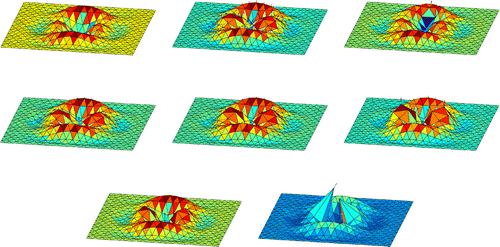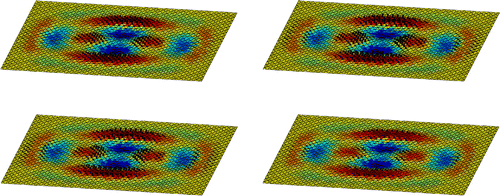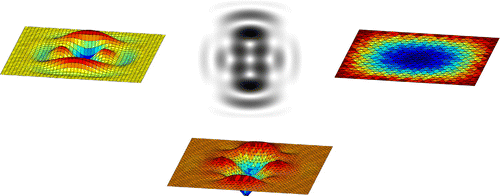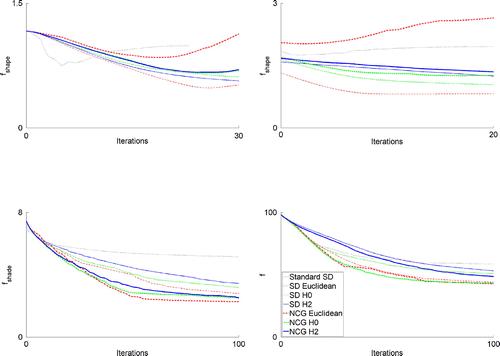Figures & data
Table 1. Definitions of some frequently used notations.
Figure 1. A free geodetic propagation with different Riemannian metrics. From top to bottom and left to right: Initial shape, Euclidiean, -,
-,
-,
-,
- and
-metric.

Figure 2. A shape together with the descent direction for different Riemannian metrics. From top to bottom and left to right: Euclidiean, -,
- and
-metric.

Figure 3. The synthetic shape, its shading image, the initial shape and its reconstruction using the SSD-method.

Figure 4. Reconstruction of the synthetic shape with the GSD-method using different Riemannian metrics. From left to right: Euclidean, - and
-metric.

Figure 5. Reconstruction of the synthetic shape with the GNCG-method using different Riemannian metrics. From left to right: Euclidean, - and
-metric.

Figure 6. Reconstruction of the synthetic shape using the GSD-method, the Euclidean metric and an oblique light source . From left to right:
,
.

Figure 7. The bottom of the ceramic cup, its shading image, the initial shape and its reconstruction using the SSD-method.

Figure 8. Reconstruction of the bottom of the ceramic cup with the GSD-method using different Riemannian metrics. From left to right: Euclidean, - and
-metric.

Figure 9. Reconstruction of the bottom of the ceramic cup with the GNCG-method using different Riemannian metrics. From left to right: Euclidean, - and
-metric.

Figure 10. The shading image of the face, the initial shape and its reconstruction using the SSD-method.

Figure 11. Reconstruction of the face with the GSD-method using different Riemannian metrics. From left to right: Euclidean, - and
-metric.



